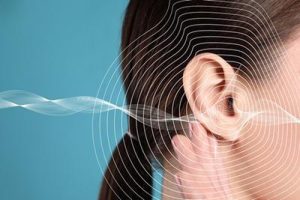United States: MedRx has unveiled an innovative tinnitus evaluation tool integrated within its MedRx Studio software, crafted to enable clinicians to accurately replicate and assess patients’ tinnitus experiences.
Traditional tinnitus assessments often employ standard audiometric frequencies and predefined sounds to approximate tinnitus perception, yet this approach restricts the spectrum of sounds accessible to patients. MedRx aims to remedy this limitation by enhancing the array of sounds that clinicians can deploy for a more tailored tinnitus-matching experience.
The MedRx tinnitus tool transcends the traditional audiogram approach by empowering clinicians to precisely sculpt sounds that closely mimic what patients actually perceive. With refined control over frequency and sound levels—down to a single Hertz and decibel increment—clinicians can finely adjust the sound to reflect the patient’s exact auditory experience. Additionally, the tool allows for alterations in sound contour through bandwidth adjustments and signal slope modifications, facilitating dynamic sound creation that mirrors patients’ tinnitus perceptions.

The suggested protocol for conducting tinnitus matching with this tool consists of a three-phase process:
Phase 1: Pitch and Loudness Matching – MedRx’s tinnitus tool provides a 1 Hz frequency precision, allowing clinicians to match the pitch of a patient’s tinnitus with remarkable accuracy. The tool enables setting a stable sensation level above audiometric thresholds for playback, simplifying the adjustment of frequency while keeping a consistent relative level for the patient, thereby expediting the pitch-matching process. Once pitch alignment is achieved, the clinician adjusts the loudness until the patient confirms that the generated sound matches their tinnitus experience. For ease of comparison, a prolonged pulse duration is advised during pitch and loudness matching.
Phase 2: Threshold Determination – After establishing the pitch and loudness, the next step is identifying the threshold of the specific tinnitus signal. Since tinnitus is often a complex sound that may not correlate directly with a single audiometric marker, determining the exact threshold for the particular signal is essential. The disparity between this threshold and the matched tinnitus signal reveals the relative loudness level experienced by the patient.
Phase 3: Minimum Masking Level – With the patient’s tinnitus thoroughly profiled, the clinician proceeds to explore masking possibilities. The purpose of identifying minimum masking levels is to evaluate whether the patient’s tinnitus can be partially or entirely masked by external sounds or if it resists masking altogether. This phase uses the least intensity of masking sound necessary to assess masking feasibility. The MedRx tinnitus tool offers a range of masking options, including narrowband noise, broadband noise, and customized sounds centered around the identified tinnitus frequency, thus expanding the clinician’s capacity to experiment with different masking techniques. Outcomes from this step assist in determining the suitability of hearing aid-based sound therapy for the patient.

MedRx’s tinnitus assessment tool is designed to streamline the setup of a comprehensive tinnitus testing protocol, enhancing precision in matching a patient’s tinnitus profile. With this approach, clinicians can monitor the progression of a patient’s tinnitus over time and demonstrate the sound to others in a free-field environment, potentially offering valuable insight to significant others. Addressing tinnitus directly through precise testing becomes a tangible goal with MedRx Studio software, which, when paired with a MedRx audiometer, can support clinics in efficiently handling tinnitus cases and delivering more effective patient care.












Be First to Comment